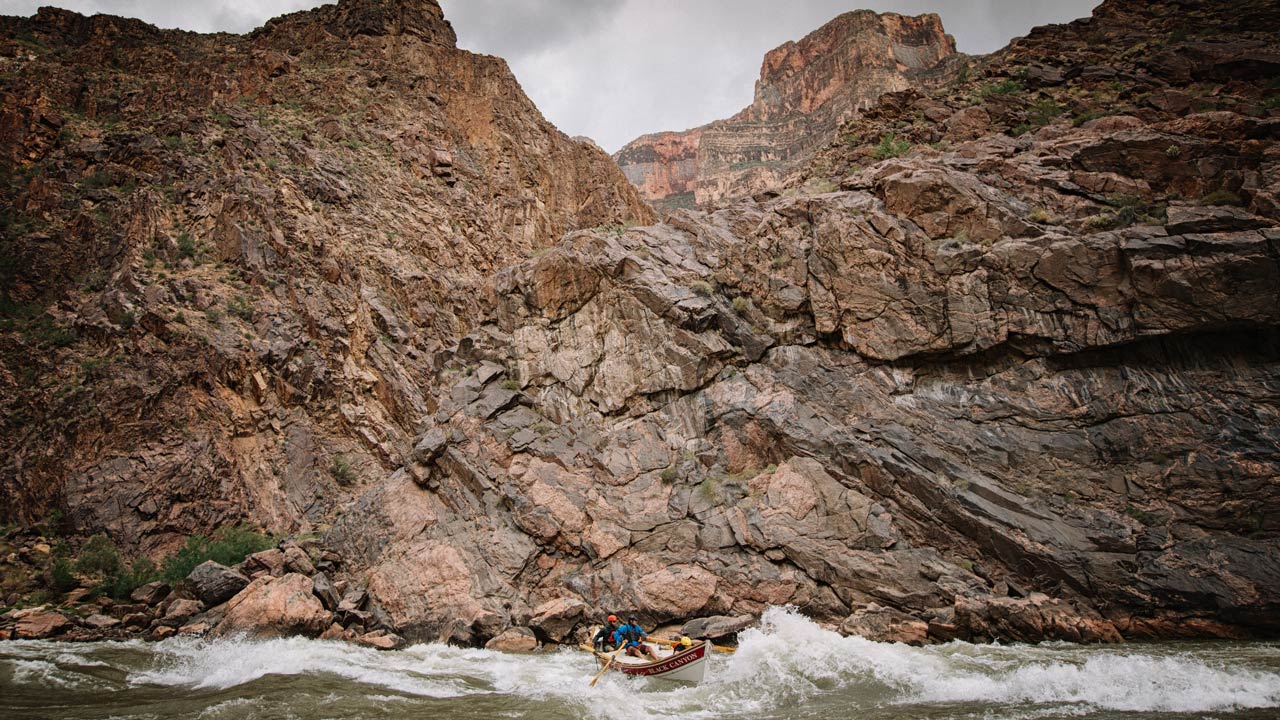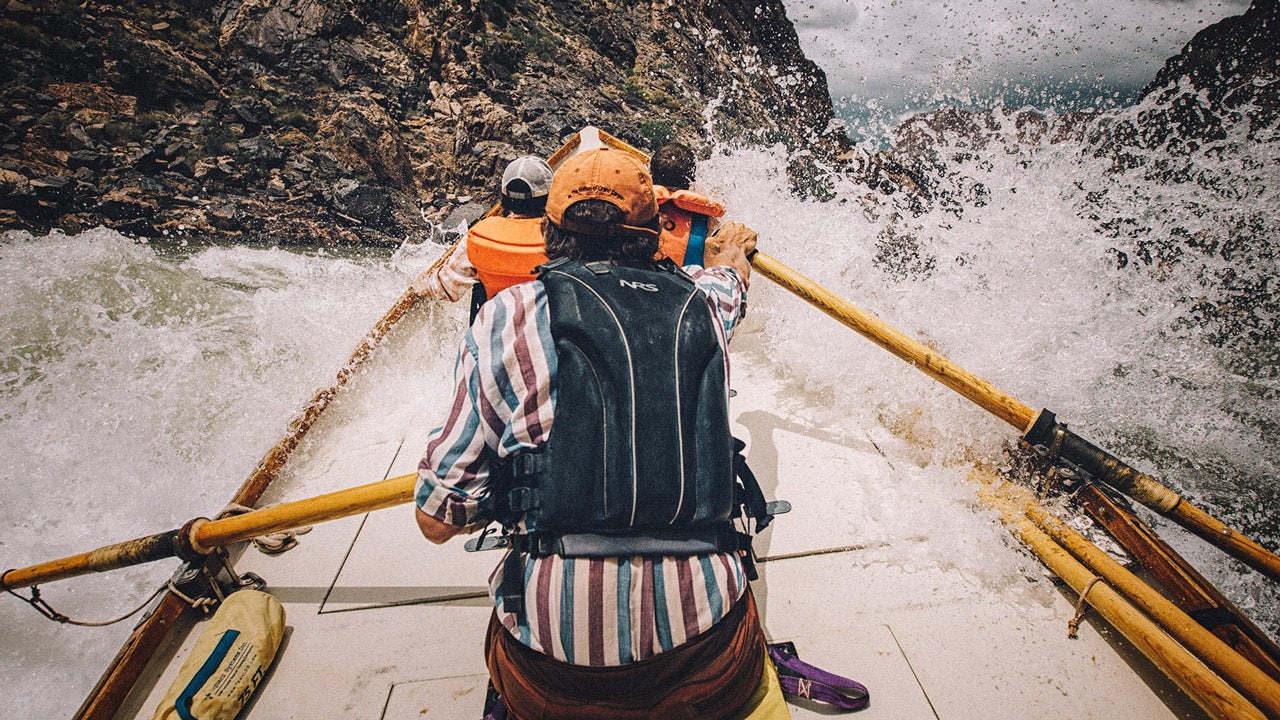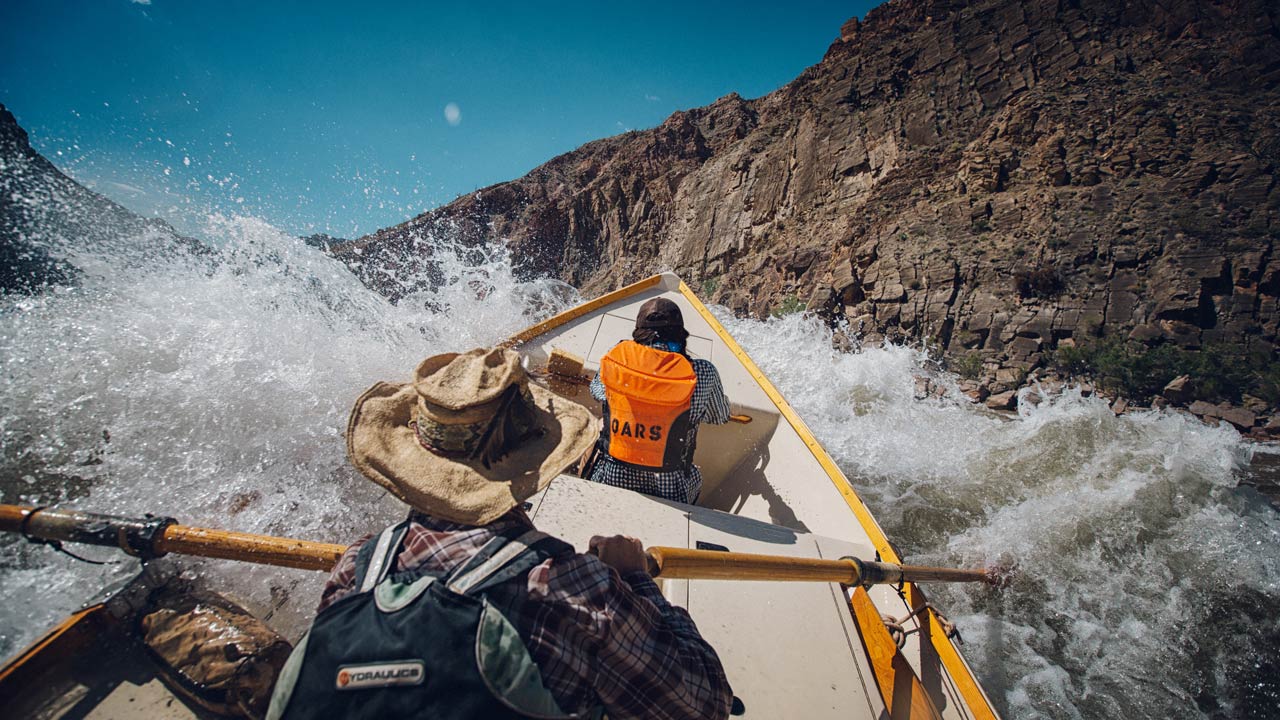In Current
YETI: What is your favorite part about being a trip leader in the Grand Canyon?
Nick Grimes: Um, let’s see…it’s the challenges and the dynamics of the system. Nothing’s ever the same, the water is always changing from season to season. It’s the dynamics of canyons, the dynamics of changing rapids, and dealing with people. Different types of people present different types of challenges.
YETI: A lot of moving parts…
NG: A lot of moving parts and it lasts for a long time. It last for days. Like tonight, I was just saying to [John Shockley] that it’s been 17 days right now of being trip leader for three different groups. Because there are exchanges along the way. So there’s exchanges and you get a different group that comes in and they have different needs, different wants, and different desires. Whether it be hikes, being scared or nervous, seeing people change throughout a trip as a result of that, what they become, how they grow.
YETI: So you’ve got the conditions of the canyon, the conditions of your own crew, and the conditions of the clients all functioning independently, but having to work together….
NG: Yes, you have to create this cohesive gel of movement down the river and still allow people to be themselves for the crew and allow them to shine in their own individual ways. We have to bring clients up that are scared to be on the trip and then also see clients with a lot of energy and excitement. So there’s this broad spectrum that you somehow have to pull all together in some sort of medium that travels all together downstream for 17 days.
YETI: How many years have you been guiding in the Grand Canyon?
NG: This is my 20th season.
YETI: Do you know about how many trips you’ve done?
NG: Somewhere around 70-plus; I haven’t counted in a while. I have it all written down, but I just haven’t looked in a while. Some years three, some two, and a lot of years five split between the spring and fall.
YETI: What makes a great crew?
NG: A great crew is a crew that will operate on their own independently while supporting the whole. And looking forward to what has to happen and what needs to be done. And is selfless. That’s really what it means to be a guide…to be selfless. You have to give more than you ever receive. You have to look for those people that need a little extra something, and you try to bring them up and inspire them. That’s what a good crew does.
YETI: How do the flows fluctuate in the Grand Canyon and as a result of that, how does it change how you run a trip and run rapids? Where does the information come from?
NG: It comes from Glen Canyon Dam, it is released at the beginning of the month, so we have a month protocol of what the water will be. Then we in turn start to operate the trip downstream in a manner that’s going to work for the safety of the trip. We try to get to the places that are challenging, or with the dories we have to have certain water. We can’t even get through certain rapids, so I try to put us in places as a trip leader where we have a good water level, but it's also fun and exciting. We try not to walk clients around too many rapids, but sometimes we get to places where the water is so low we have no choice but to walk some of them.
YETI: And what happens with the boats when you have to walk groups around rapids?
NG: The guides run them empty, and sometimes we take a highsider with us just for safety, and we make these quick little tight moves over shallow rocks or in between big features of the river. That just doesn’t work when you have a big heavy boat - you have to have a fast agile little craft that can skirt in and around those river features. The releases from Glen Canyon Dam are consistently getting lower, and as the drought situation in the desert southwest continues, we are going to see lower flows which are going to create more and more changes in how we operate the trips and how we look at things.
YETI: What are the flows released from Glen Canyon Dam based off of?
NG: The flows are based off of the amount of water that comes into the upper basin reservoirs, and Glen Canyon Dam is then required to release a certain amount of million-acre feet to the lower basin states. In good years you have more inflow to Lake Powell, and bad years you are just maintaining or losing water volume in that reservoir. So the Bureau of Reclamation is working on the juggling act of what needs to be released to the downstream basin and also at the same time maintaining in-stream flow requirements for the Colorado River, and these things are getting more and more challenging as we continue to see this drought.
YETI: What is your favorite rapid and why?
NG: My favorite rapid is also my scariest rapid. It is Horn Creek which is just below Phantom Canyon.
YETI: If you are doing the full canyon trip, where does this rapid take place: beginning, middle, etc.?
NG: We do a phantom exchange, and if you are going all the way through, it is in the middle of the trip. If you are coming in at Phantom Canyon Ranch which is about mile 87, then you are coming into the boat for the first time at one of the biggest drops you’ve seen in the Grand Canyon. It is one of the most beautiful falls of water; it is a cascade that just rolls over. It almost feels like an abyss and just runs into these huge standing waves that take up the majority of the river.
YETI: So a big wave train?
NG: Giant wave train. It takes up three-fourths of the river, and you have to avoid the middle of the river and make a sneaky little move to the left. One way or another, you are going to go left. So there’s a move called “the horns” which gives Horn Creek its name and you split these two giant boulders that’s the higher water run; the lower water run is making the cross-current move.
YETI: What time of year is the most beautiful to make a trip down the canyon?
NG: Spring and fall. Both have their own appeal. Springtime offers flowers, crazy dynamic weather, and the canyon hasn’t figured out whether its spring, summer, or still winter sometimes. So you get these storms and cumulus clouds that just blow your mind. The one thing you have to be ready for is a lot of wind. That is just a part of the whole scenario.
YETI: And that’s a big challenge for the guides?
NG: Yeah, the wind is one of the biggest challenges for the guides and the clients. It just can last for days or 15 minutes; it can pick up or die down; you can get gusts that will hit you at 40 miles an hour; then the whole thing will be gone. But the flowers, it’s the one time of the year that the canyon is just alive. You see flowers after a big monsoonal fall or a good winter; flowers like you can’t even believe. It can just be absolutely gorgeous. That’s part of the dynamics of the spring.
The fall is kind of the quiet time when the canyon’s going to sleep. Lighting is changing, its low angle lighting, the rocks come to life, and you do get some of the plants and cacti still flower if it is a good monsoon season. It just has a warm glow to it, and it has a settled time of the year for the weather so it’s the exact opposite.
YETI: No big storms…for the most part it’s pretty mellow?
NG: Yeah, like it’s going to bed almost. And for the guides it is the closing of the season, or the closing of the chapter of people that work in a seasonal environment; it is like the animals that move north and south with migration. It’s a closing for the guides and a time where they’re going to start going their separate ways and on their individual migrations of life and going home or to where they call home or to someplace else so it is a nice closure, the fall.
YETI: Who is the most legendary guide you’ve ever worked with and why?
NG: For me it would be a guy named Bill “Bronco” Brucheck. Bronco gained his name because of a lot of different things, but mostly you know, he just believed in what he did and he loved it. He truly thought that guiding was the greatest job in the world. And he did it for close to 40 years. He did the Grand Canyon and Idaho (middle fork of the Salmon River) the same as I do. He and I boated together all the time and I can’t even count how many trips we’ve done. And he just retired this year. It is the first year I am going to be without him as a pard (partner), and one of my best friends in the world. He knows what it means to be a professional and to take care of people and also to just get out there and have a ton of fun. And just sit up and howl at a thunderstorm and lightning and wind and rain. I remember years ago when we were coming down through this section when it gets very skinny, and you're just about banging off the walls in your dory, getting 40 or 50 miles winds, and we were literally getting thrown into walls and he was just standing on the deck of his dory and just yelling "bring it on!" Not a single passenger or anyone knew what to think of that, but he…
YETI: They probably thought if this guy’s going to be OK, we are all probably going to be OK.
NG: Exactly, he just…. And that was what he was so good at, too. He was just a leader and leading without saying he was a leader and, he led oodles and oodles of trips. And he just went out there and brought people together; they just wanted to follow him; they wanted to be a part of what he was doing. Whatever Bronco was doing, you were doing. He knew how to teach and he knew how to step back and let them ride. Let people do their job.
YETI: Last question: what does it take to make it as a Grand Canyon guide?
NG: Patience, first and foremost. But you got to hang on; you got to hang on like you mean it and you love it. And I think the key is you just have to love being out. You have to love being outside and love dealing with whatever is thrown at you. And keep a smile on your face through all kinds of weird stuff that comes down at you, through passengers, crews, drama, everything and anything, and never give up. You are going to show up and quietly learn for a period of time, and quietly figure things out, and then just quietly start giving back. Because you love it, and the people around you are supporting you. And they see that in you, and it’s a community and family that brings you up and supports you. You want to be a guide and you know that the job sometimes sucks and sometimes is wonderful, and you are never going to get rich doing it. You’re just going to do it because of who and what you are and the place is just feeding you. And the smile on people’s faces is what you have to share with other people. If you lose that, you have to get off the train and go do something else.



